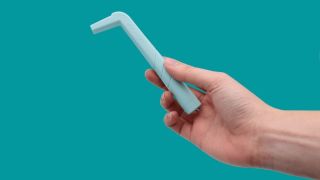Hiccough cure, red seaweed benefit, implanted pharmacy, and more
19 Jun 2021
Posted by Andrew Kantor
Direct Deposit
Another recurring theme these days: new ways to deliver drugs to specific targets in the body. The latest comes from UC San Diego, where engineers have combined some hot buzzwords to come up with “genetically engineered cell-membrane-coated nanoparticles.”
In their proof of concept at least, these particles were coated to mimic a type of immune cell that inflamed lung tissue ‘called out’ for. They went straight to the lungs where that membrane looked for and bound to those inflamed cells, delivering the nanoparticles (which were packing dexamethasone) right where they were needed.
“We’re delivering the exact same drug used in the clinic, but the difference is we’re concentrating the drugs to the point of interest. By having these nanoparticles target the inflammation site, it means a larger portion of the medicine will wind up where it’s needed, and not be cleared out by the body before it can accumulate and be effective.”
Time to research some Covid cures
As we move from worrying about preventing Covid to worrying about treating it, the U.S. is trying to get ahead of the game, placing a bet on antiviral treatments in the form of a pill. It would have to be taken early in the infection, but it could save a lot of lives.
Think of it as Operation Warp Speed’s little brother, Operation Impulse Power. It’s a mere $3 billion going towards antiviral research for coronaviruses and others, but it will hopefully yield something better than remdesivir, which is the closest we’ve got to a treatment.
Dr. Anthony Fauci […] said he looked forward to a time when Covid-19 patients could pick up antiviral pills from a pharmacy as soon as they tested positive for the coronavirus or develop Covid-19 symptoms.
A plastic hiccup cure
Sorry, but whatever your mother/uncle/friend/roommate/weird hobo on the corner swears by probably doesn’t work. But this is different. Meet the Forced Inspiratory Suction and Swallow tool (FISST), invented and patented by a Johns Hopkins neurosurgeon.
It’s a rigid plastic tube, kind of a L shape (heck, look at the image) You put it in a half-full glass of water (or half-empty, if you don’t think it’ll work), then suck water through it and swallow the liquid.
FISSTing this way stimulates the phrenic nerve….
which sends motor signals to the diaphragm, and the act of swallowing stimulates the vagus nerve, which helps control unconscious activity of the digestive tract and connects to the epiglottis
All this is meant to keep the phrenic and vagus nerves busy so they can’t trigger hiccups. And it apparently stops them virtually instantly. Once more testing is done, look for it to be sold as “HiccAway.”

DARPA wants to put you out of a job
The Defense Advanced Research Projects Agency wanted to cure jet lag, so — as is so often with the military — it went a litttttle overboard. The plan (still in proof-of-concept stage, so don’t freak out) is … drumroll, please … the implantable living pharmacy.
Researchers envision a miniaturized factory, tucked inside a microchip, that will manufacture pharmaceuticals from inside the body. The drugs will then be delivered to precise targets at the command of a mobile application.
The objective is to allow soldiers to use an app to reset their internal clocks. Of course, once you have an app-controlled drug factory in your body, who knows what else it could be used for. And the designer promises it will be safe from hackers and other ne’er-do-wells. Mm hmm.
Science Marches On: Finest of the Flavors edition
“Scientists convert used plastic bottles into vanilla flavouring”
Seaweed vs cancer
Asian people tend to have lower rates of breast, colon, and colorectal cancers than the rest of the world. They also eat more seaweed. Could there be a connection?
You’re reading it here, so … yes.
No one is satisfied with “seaweed prevents cancer” — we need to know why. And by “we” I mean “researchers in Korea and at the University of Illinois.”
What they found is that when red seaweed breaks down, two of the sugars produced (agarotriose and AHG) are perfect foods for a particular gut bacteria — one that happens to be a very good probiotic. The result: people with guts that keep their cancer risk down.
“These results show us that when we eat red seaweed, it gets broken down in the gut and releases these sugars which serve as food for the probiotic bacteria. It could help explain why Japanese populations are healthier compared to others.”
The Long Read: Future of mRNA edition
“How mRNA Could Revolutionize Medicine”: Not just as a vaccine, but as — and this is not creepy at all — as an internal gene-editing system.
Just as mRNA can instruct our cells to produce antibodies against a viral infection, it can also teach them to produce the two molecular components that make up CRISPR — a guide molecule and a cutting protein — to snip out a problem gene.


